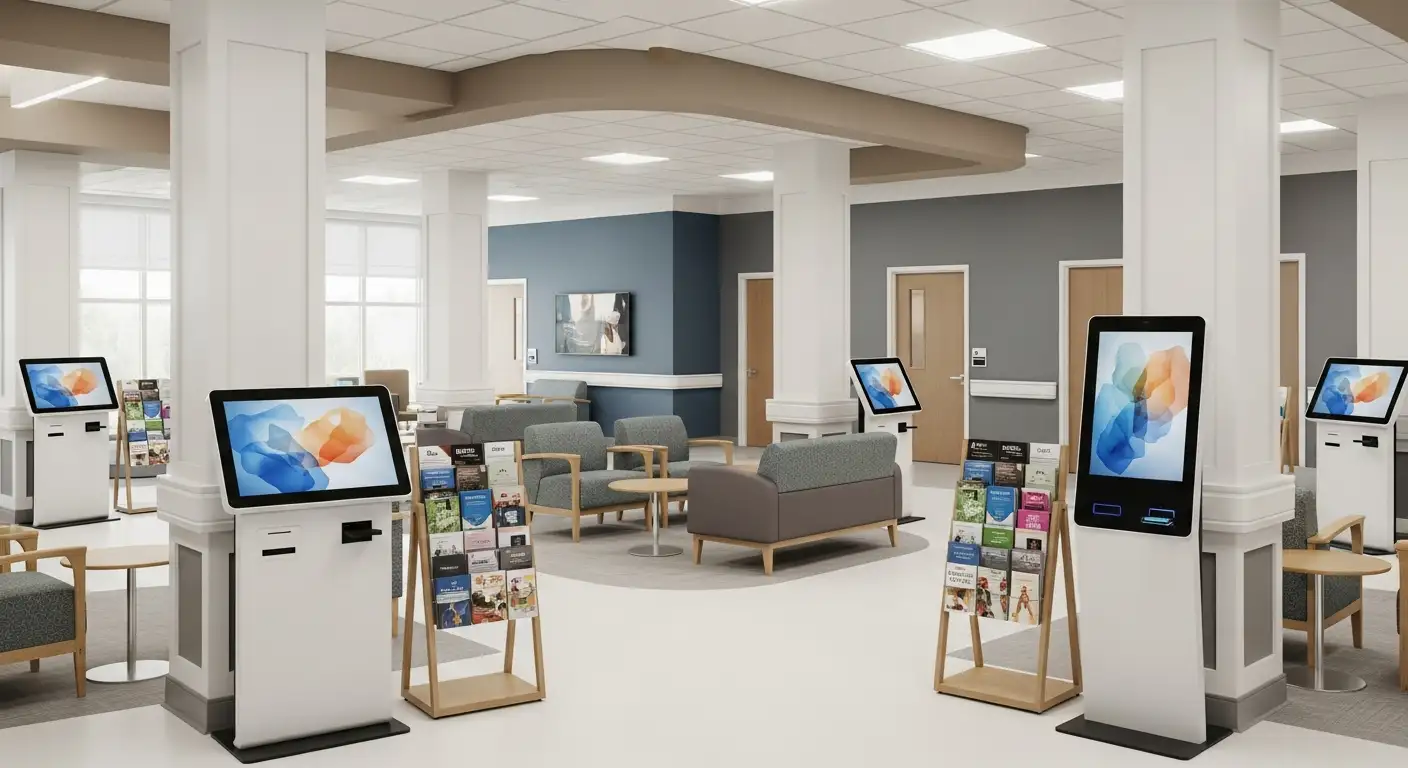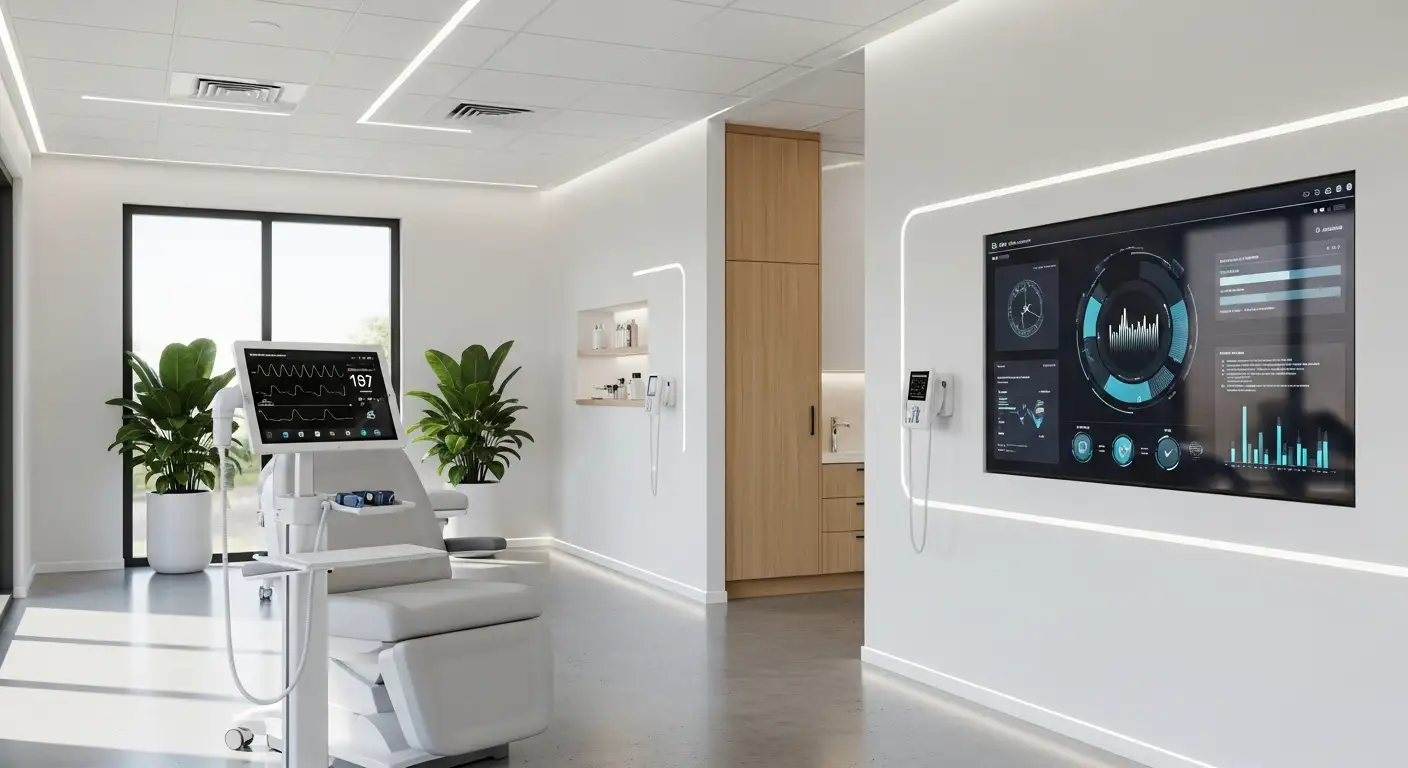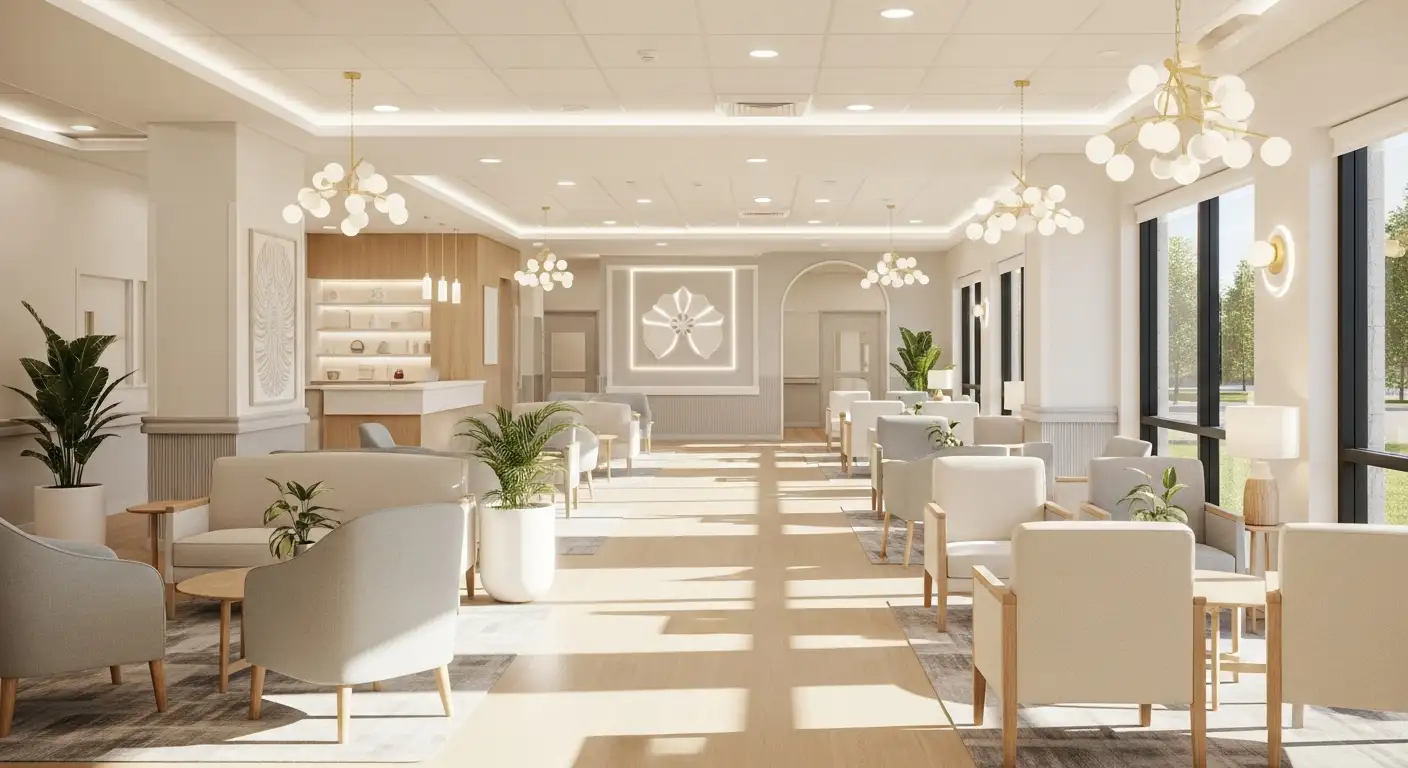How In-Home Check-ins Caught a Senior’s Hypertension Early
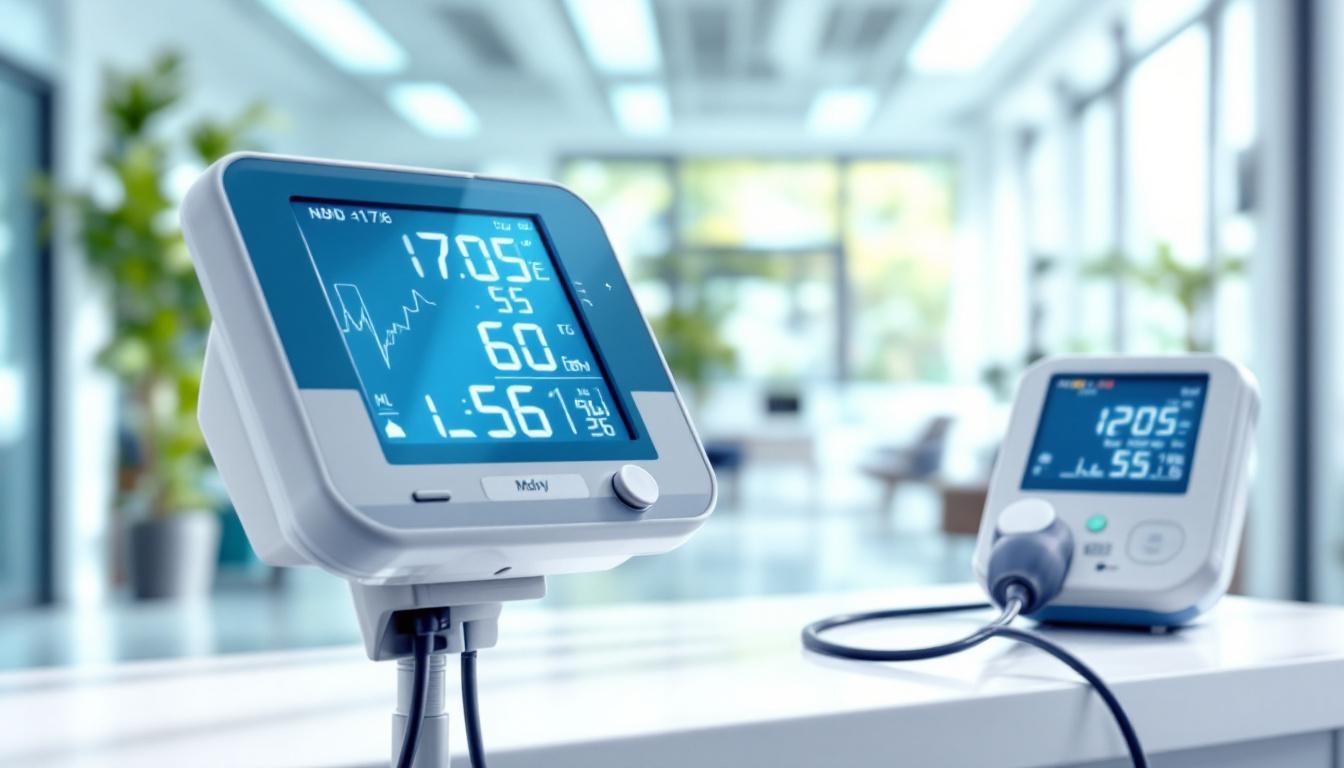
Proactive In-Home Monitoring and its Impact on Senior Health
As the aging population seeks to maintain independence and health, innovative in-home health check-ins are transforming how hypertension and related health issues are detected early. These services, supported by modern digital health solutions, enable timely identification and management of blood pressure fluctuations, potentially preventing life-threatening complications and preserving cognitive function.
The Prevalence and Risks of Hypertension in Older Adults
Why is early detection of hypertension important, and how can home-based care assist?
Hypertension is the most common chronic condition among seniors, affecting approximately 60 to 80 percent of this population. This high prevalence significantly increases the risk of serious health issues such as strokes, heart attacks, and heart failure if left uncontrolled.
For older adults, early detection is vital because it enables timely medical intervention, which can prevent or delay the onset of severe complications. Regular monitoring allows for the identification of small changes in blood pressure, which might signal the need for adjustments in treatment or lifestyle.
Home-based blood pressure monitoring (HBPM) offers a practical, accessible, and effective solution. It enables seniors to measure their blood pressure regularly in their own environment, reducing dependence on clinic visits and minimizing inaccuracies caused by factors like 'white-coat' hypertension.
Using validated home monitors, individuals can gather long-term blood pressure data, providing a clearer picture of their vascular health. This information helps healthcare providers tailor treatments more accurately, leading to better control of hypertension.
Furthermore, routine blood pressure checks at home empower seniors to participate actively in their health management. They can share their readings with doctors remotely, which is particularly valuable for those living independently or with limited mobility.
By integrating home monitoring into everyday care, early detection of hypertension becomes more consistent, helping to prevent related complications and promoting healthier aging.
Mechanisms and Impact of Aging on Blood Pressure
How arteries change with age
As people age, the blood vessels, especially arteries, tend to stiffen and become less elastic. This process is partly due to the natural wear and tear of the vessel walls and the accumulation of changes like calcification and reduced collagen elasticity. These alterations increase resistance to blood flow, which can elevate blood pressure.
Natural risks associated with aging and hypertension
Elevated blood pressure, or hypertension, becomes increasingly common with age—about 60 to 80 percent of older adults are affected. Hypertension is considered a significant risk factor for severe health issues such as strokes, heart attacks, and heart failure. The stiffening of arteries is a major contributor, as it makes it harder for the heart to pump blood efficiently, raising systolic blood pressure.
Connection between age-related blood vessel stiffening and high blood pressure
The link between aging and hypertension is rooted in the stiffening of arteries. As arteries lose their flexibility, they cannot expand and recoil normally, leading to higher systolic pressures. This change not only increases the workload on the heart but also raises the risk for vascular damage. Monitoring these subtle changes over time through regular blood pressure checks at home can help detect early signs of vascular deterioration, enabling timely medical intervention.
Benefits of Regular In-Home Health Monitoring for Elderly Individuals
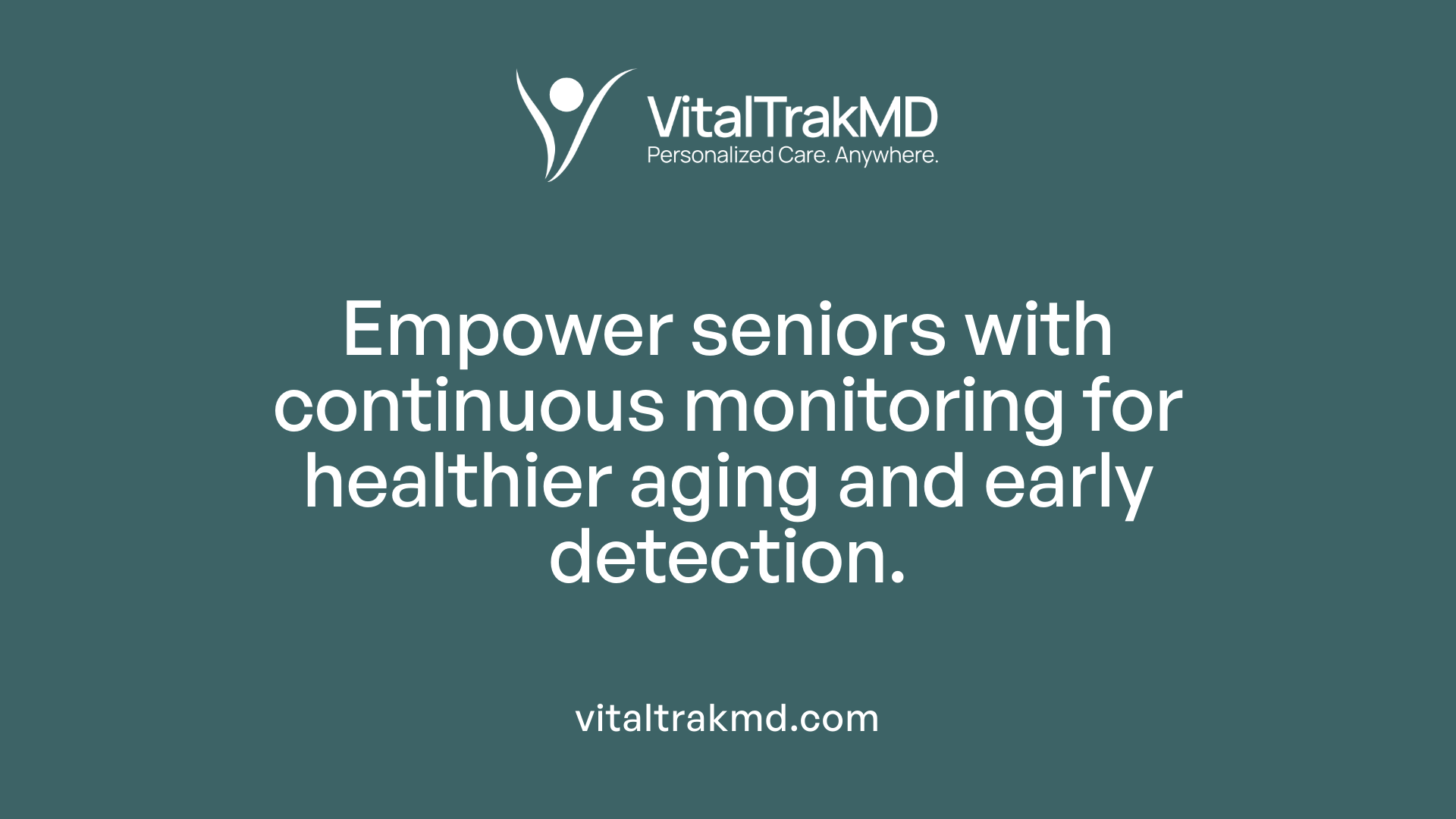
What are the benefits of regular in-home health monitoring for elderly individuals?
Regular in-home health monitoring provides numerous advantages for older adults. It allows for early detection of potential health issues, such as hypertension, diabetes, heart failure, or respiratory problems. By continuously tracking vital signs like blood pressure, heart rate, oxygen saturation, and temperature, seniors and their caregivers can spot unusual changes promptly, leading to timely medical attention and preventing serious complications.
This ongoing observation supports effective management of chronic conditions. Seniors can regularly review their health data, adhere to medications, and follow lifestyle recommendations, which collectively improve overall health outcomes. The data shared with healthcare providers facilitates better care planning and adjustments, ensuring treatments remain effective.
Safety features integrated into home health solutions, including fall detection and emergency alert systems, are vital. These features provide immediate assistance during emergencies, such as falls or sudden health deteriorations, reducing the risk of severe injuries or hospitalizations. Remote communication capabilities allow healthcare professionals to monitor conditions and intervene early if needed.
Moreover, in-home health monitoring plays a significant role in maintaining independence and emotional well-being. Seniors can live comfortably in familiar environments, feeling secure with the knowledge that help is accessible if necessary. This autonomy helps reduce stress and loneliness, especially when combined with social interactions and caregiver support. Overall, adopting smart monitoring technologies not only safeguards health but also enhances the quality of life for elderly individuals.
Tools and Methods for In-Home Blood Pressure and Health Assessments
 Monitoring blood pressure at home is a practical approach for older adults to stay on top of their health and manage conditions like hypertension. The most common tool used is validated digital blood pressure monitors, often automatic cuff-style devices. These devices need to be of high quality and properly calibrated to ensure accurate readings. Correct cuff sizing is important; an improperly fitted cuff can give misleading results.
Monitoring blood pressure at home is a practical approach for older adults to stay on top of their health and manage conditions like hypertension. The most common tool used is validated digital blood pressure monitors, often automatic cuff-style devices. These devices need to be of high quality and properly calibrated to ensure accurate readings. Correct cuff sizing is important; an improperly fitted cuff can give misleading results.
Proper measurement techniques are essential for reliable data. Seniors should sit comfortably with their back supported, feet flat on the floor, and the arm resting at heart level. It’s important to avoid talking, eating, smoking, or exercising at least 30 minutes prior to measuring. Typically, two measurements are taken, separated by at least one minute, and repeated over several days to establish an accurate average. Recording these readings in a dedicated notebook or digital app helps healthcare providers monitor long-term trends.
Beyond blood pressure, other health assessment tools enhance at-home monitoring. Pulse oximeters measure oxygen saturation, with normal levels between 95% and 100%. Regular weight scales can detect sudden weight fluctuations that might indicate medical issues. Some devices now incorporate smart features, such as cuffs with intelligent wrap-around sensors that improve accuracy and ease of use.
Technologies have advanced to include data sharing capabilities. Digital health apps and remote monitoring systems allow older adults to transmit their vital signs directly to healthcare providers. This continuous flow of information enables early detection of health concerns, such as blood flow issues or signs of deterioration, prompting timely medical intervention.
In summary, a combination of validated devices, proper measurement techniques, supplementary assessment tools, and data sharing technology creates a comprehensive system for effective in-home health monitoring. Such practices empower seniors to maintain their independence and facilitate early intervention for health issues.
In-Home Check-ins and Their Role in Early Hypertension Detection
How can in-home health check-ins facilitate early detection of hypertension in seniors?
In-home health check-ins play a vital role in catching hypertension early among older adults. These visits allow healthcare providers and caregivers to regularly monitor vital signs like blood pressure, which is crucial since hypertension often presents without noticeable symptoms.
By performing routine blood pressure measurements in the comfort of the senior’s home, caregivers can identify rising trends or abnormal readings before they lead to serious health issues. ConsidraCare and similar services often include trained professionals who ensure measurements are accurate, reducing the risk of missed diagnoses.
These check-ins also serve as a platform to offer personalized health education. Caregivers can advise seniors on lifestyle changes such as reducing salt intake, engaging in safe physical activities, and maintaining a healthy weight, all of which are important for managing blood pressure.
Moreover, regular assessments enable timely treatment adjustments. If a senior's blood pressure is elevated or fluctuating, caregivers can communicate these findings to physicians for prompt intervention.
This proactive approach not only helps in early detection but also fosters better compliance with treatment plans. Mental engagement and continuous monitoring create a safety net that significantly reduces the risk of hypertensive complications like strokes or heart attacks.
Overall, in-home check-ins are a strategic way to monitor, educate, and manage hypertension, ensuring seniors can maintain their independence and health with reduced risk of serious vascular issues.
Personalized Care and Improved Outcomes from Home Check-ins
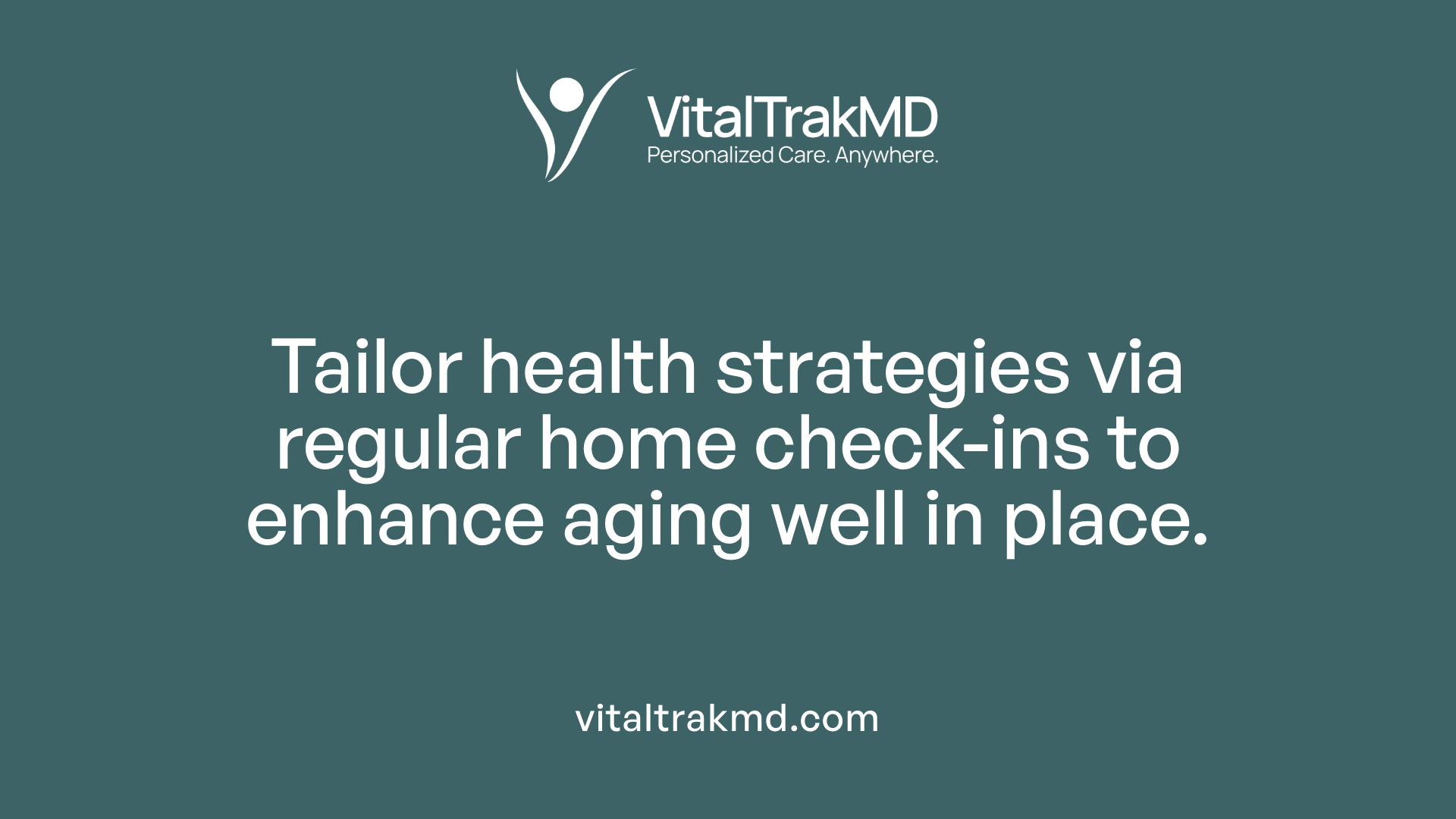 Regular in-home check-ins provide a vital link between seniors and their healthcare providers, enabling real-time feedback on health status. For older adults monitoring conditions such as hypertension, these visits offer an opportunity to promptly share vital sign data like blood pressure, heart rate, and oxygen saturation.
Regular in-home check-ins provide a vital link between seniors and their healthcare providers, enabling real-time feedback on health status. For older adults monitoring conditions such as hypertension, these visits offer an opportunity to promptly share vital sign data like blood pressure, heart rate, and oxygen saturation.
Healthcare professionals can analyze this data immediately, allowing for timely adjustments in treatment plans. This personalized approach ensures that care strategies are tailored specifically to the individual’s current health situation, whether it involves medication management, dietary recommendations, or lifestyle modifications.
In addition to adjusting medical treatments, in-home check-ins help identify early signs of health deterioration, which might otherwise go unnoticed. Detecting issues like rising blood pressure or weight changes early can prevent serious complications, emergency hospital visits, or hospital readmissions.
These visits also foster better coordination of care, integrating services such as nursing, therapy, and personal assistance tailored to each senior’s needs. By regularly monitoring vital signs and other health indicators, caregivers and clinicians can optimize disease management, ultimately enhancing the senior’s independence and quality of life.
Overall, the strategic use of home check-ins creates a more responsive healthcare model. It supports prevention, early intervention, and a personalized approach that improves health outcomes for older adults, helping them age safely and comfortably in their own homes.
Best Practices for Conducting Effective In-Home Health Visits

What are best practices for conducting effective in-home health visits for seniors?
Effective in-home health visits are crucial for maintaining seniors' health, safety, and independence. Start with a thorough needs assessment that covers physical health, cognitive status, emotional well-being, safety concerns, and social support systems. This helps tailor the care plan to the individual's unique circumstances. Involving healthcare professionals such as nurses, therapists, and social workers ensures comprehensive coverage of necessary services.
Building trust and establishing clear communication are vital. Caregivers should explain procedures, listen to concerns, and respect the senior’s preferences to foster cooperation. Personalize services like medication management, health monitoring, and mobility support to meet specific needs.
Safety considerations include evaluating the home environment for fall risks, ensuring adequate lighting, and installing emergency alert systems. Implementing safety modifications, such as grab bars and removing tripping hazards, can significantly reduce accidents.
Coordination with a multidisciplinary team is essential for holistic care. Regular communication with physicians, specialists, and community resources ensures the care plan remains relevant and effective. Monitoring vital signs like blood pressure, blood sugar, and oxygen saturation during visits helps catch potential issues early.
Ongoing review and adaptation of the care plan are key. As the senior’s health evolves, adjusting treatments, scheduling regular follow-ups, and providing caregiver training contribute to better outcomes.
Incorporating these best practices optimizes in-home visits, supports aging in place, and enhances quality of life for seniors.
The Role of Caregiver Support and Home Care Services in Hypertension Management
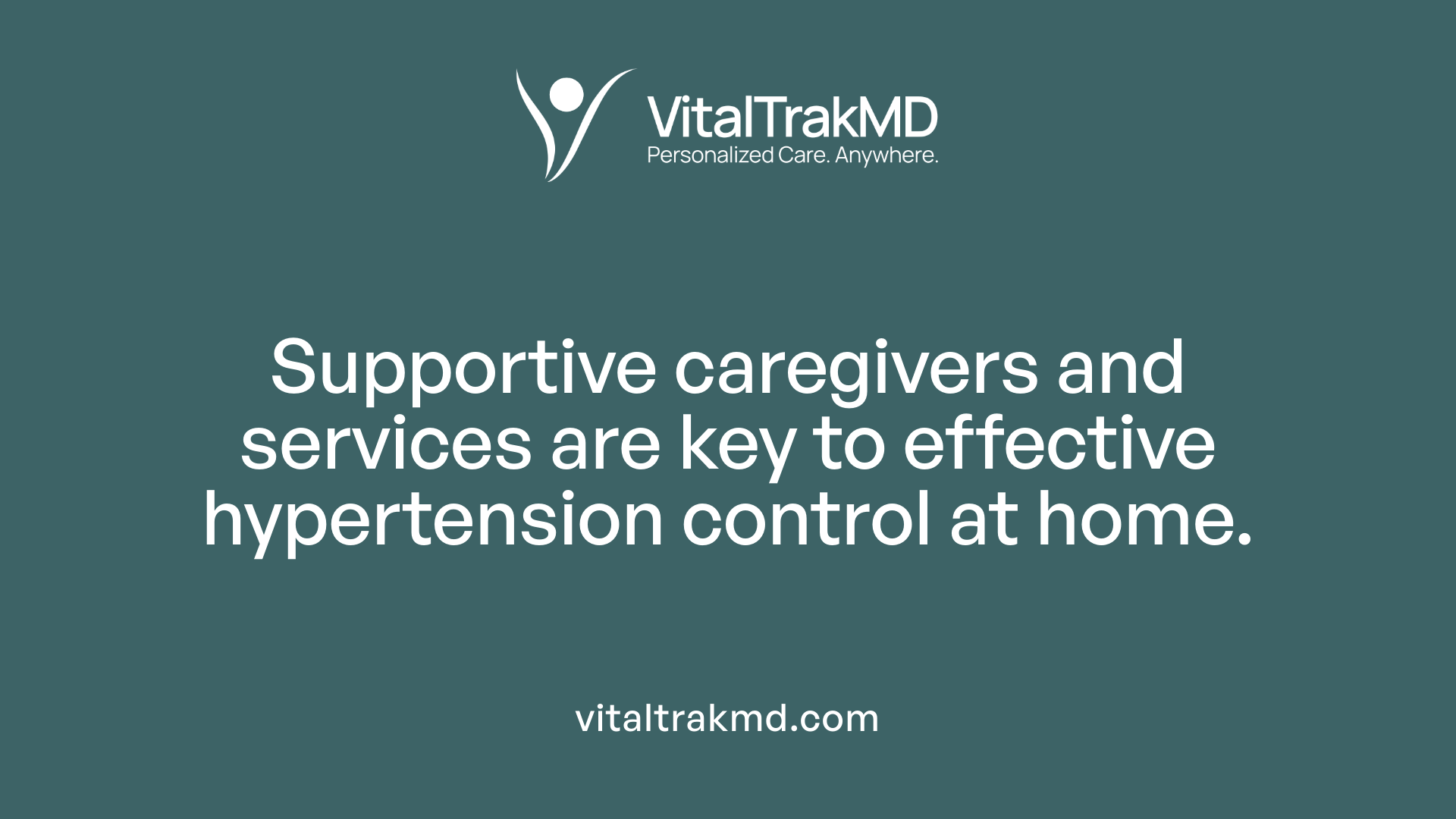 Caregiver support and home care services are essential in helping older adults effectively manage hypertension, a common chronic condition among seniors. These services ensure that seniors adhere to medication schedules, regularly monitor their blood pressure, and stay informed about their health status. Trained caregivers assist with the use of simple home blood pressure cuffs, helping seniors track small changes that could signal health issues requiring medical attention.
Caregiver support and home care services are essential in helping older adults effectively manage hypertension, a common chronic condition among seniors. These services ensure that seniors adhere to medication schedules, regularly monitor their blood pressure, and stay informed about their health status. Trained caregivers assist with the use of simple home blood pressure cuffs, helping seniors track small changes that could signal health issues requiring medical attention.
Beyond medication management, caregivers guide lifestyle modifications—such as maintaining a heart-healthy diet, increasing physical activity, reducing salt intake, and managing stress—which are crucial for controlling blood pressure. They can also prepare nutritious meals aligned with dietary guidelines like the DASH diet and encourage seniors to participate in safe, supervised exercise routines.
Programs like the Social Support Family Caregiver Training Program (SSFCTP) empower caregivers with knowledge and skills. This training enhances their confidence, enabling them to support seniors better and promote self-care behaviors. Such education is vital for managing conditions like hypertension and preventing complications like strokes or heart attacks.
Home care services also help reduce hospitalizations by providing early detection of troubling signs, managing medication and lifestyle routines, and offering emotional support. These services support seniors’ independence by allowing them to stay in familiar environments while receiving continuous health oversight.
In summary, caregiver involvement not only improves health outcomes by ensuring consistent monitoring and education but also fosters a sense of security and independence for seniors. Through tailored strategies and ongoing support, caregivers help maintain optimal blood pressure levels and overall well-being.
Additional Points on Support and Care Services
| Service Type | Description | Benefits |
|---|---|---|
| Medication management | Ensuring correct use of medicines | Prevents complications and hospital visits |
| Blood pressure monitoring | Regular checks at home | Early detection of issues |
| Dietary support | Heart-healthy meal planning | Blood pressure control |
| Physical activity encouragement | Safe exercise routines | Improved vascular health and mobility |
| Education and training | Caregiver programs like SSFCTP | Empowerment and better care |
| Fall prevention | Home safety assessments | Reduced injury risk |
| Emotional support | Companionship and stress reduction | Better mental and physical health |
By integrating these services, caregivers significantly contribute to effective hypertension management, helping seniors enjoy healthier, more independent lives.
Supporting Evidence and Outcomes of Home Monitoring in Detecting Hypertension
Research has shown strong evidence supporting the use of in-home blood pressure monitoring (HBPM) for early detection and management of hypertension. Studies indicate that HBPM provides more consistent and accurate measurements compared to traditional office readings. These measurements are better correlated with long-term health outcomes, such as organ damage, stroke, and heart disease.
Meta-analyses reveal that regular home monitoring helps identify cases of masked hypertension, which might remain undetected during routine office visits. Incorporating HBPM into standard care routines has been associated with significant reductions in systolic and diastolic blood pressure, contributing to better health outcomes.
Guidelines from reputable organizations like the American Heart Association recommend HBPM as a reliable, cost-effective tool for diagnosing hypertension, including white-coat and masked variations. It also aids in managing resistant hypertension by providing accurate data for treatment adjustments.
Enhancing HBPM with telemonitoring technologies further improves results. These systems allow continuous data sharing with healthcare providers, enabling timely interventions.
Pharmacist-led interventions, synchronized with home BP data, have demonstrated improved blood pressure control, reduced cardiovascular risks, and early detection of rising blood pressure levels. In summary, combining physical monitoring with digital health solutions offers a promising approach to early identification and better management of hypertension, especially for vulnerable older adult populations.
Fostering a Culture of Proactive Health Management
The integration of regular in-home check-ins, validated digital monitoring tools, and caregiver support forms a comprehensive approach to early hypertension detection among seniors. These strategies not only facilitate timely medical interventions but also promote ongoing health education, lifestyle adjustments, and personalized care plans. As a result, seniors can maintain better blood pressure control, reduce the risk of severe complications like strokes and dementia, and enjoy a higher quality of life. Emphasizing proactive health management and leveraging technological advances will be key in addressing the rising challenge of hypertension in the aging population.
References
- Monitoring Older Adult Blood Pressure Trends at Home as a Proxy ...
- DIY Health Checks: How to Track Your Seniors' Vital Signs at Home
- Senior Check-In Services & Best Practices - Keystone Health
- Aetna Healthy Home Visit Program - Medicare Plans
- 6 Steps to Better High Blood Pressure Treatment for Older Adults
- Why Do Seniors Need Regular Blood Pressure Checks?
- The Role of In-Home Care on Managing Seniors' Hypertension and ...
Recent articles
Want to Feel Better and Live Healthier?
Join hundreds of patients taking control of their health with personalized care that fits their life – not the other way around.
Rated 4.8/5 by 32+ customers



